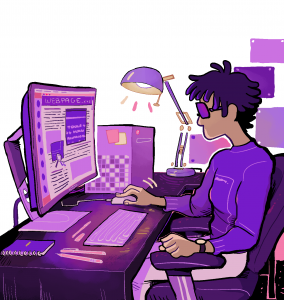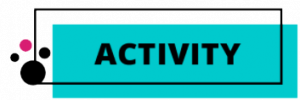Module 4: The Materiality of Media
4.4 Access Barriers and Harm

In the second module, we made a list of platform affordances and constraints using the lens of access and disability justice. We saw how writers like Leah Lakshmi Piepzna-Samarasinha (2018) and Johanna Hedva (2016) point to the way in which digital media can be an effective way for disabled users to create community, share stories, protest, love, learn, and educate. However, as Goggin (2017) pointed out, it’s important to recognize that every platform, medium, and format is limited, and that disability is incredibly diverse. Here, we can invite Elizabeth Ellcessor into the conversation to complicate our understanding of the relationship between digital media and disability.
In Restricted Access (2016), Ellcessor outlines the ways in which digital media can be both inaccessible for people with disabilities as well as disabling. Ellcessor argues that “digital media cultures take for granted an able-bodied user position, potentially restricting access for users with a variety of disabilities” (p. 2). She goes on to explain that “access must be understood not in terms of availability, affordability, or choice but in terms of an individual’s ability to engage meaningfully with a medium/technology and its content” (p. 6). In this section, we will begin to explore the ways in which digital media is inaccessible and exclusionary. We will critically consider which bodies our devices and programs are designed for and which bodies are positioned as the exception, needing accommodations and special (often expensive) set-ups. Remember also the ways that disabled people are creative and agentive within these systems, as outlined in Module 3.

Inaccessible and Harmful Digital Media
In what ways are digital media inaccessible or even harmful to users? Examples:
- Not always close-captioned
- Designed in ways that are not always accessible to people with colour blindness
- Flashing or strobing lights that can cause seizures
Take a few minutes to brainstorm other ways in which digital media are inaccessible or actively harmful to users. Click this link to create your own copy of a chart with different technologies and platforms to guide your brainstorming, or fill out the text boxes below.
Questions to guide your analysis:
- Do these technologies require bodies to be in a certain position? I.e. Sitting at a desk, walking around, etc.
- What parts of our bodies do the technologies heavily rely on for use? I.e. Hands and fingers for touchscreens, ears and hearing for audio, etc.
- Does the platform have alt-text on images for screen readers?
- Does the platform offer close captions? Are the captions created by a person or a program, and how good are the captions?
- Is accessibility an afterthought or built into the platform?
- How might people with different physical disabilities access these platforms?
- How might people with mental illnesses be affected by these platforms and their content?
- Is it easy to find the access options or are they obscured or hidden?

